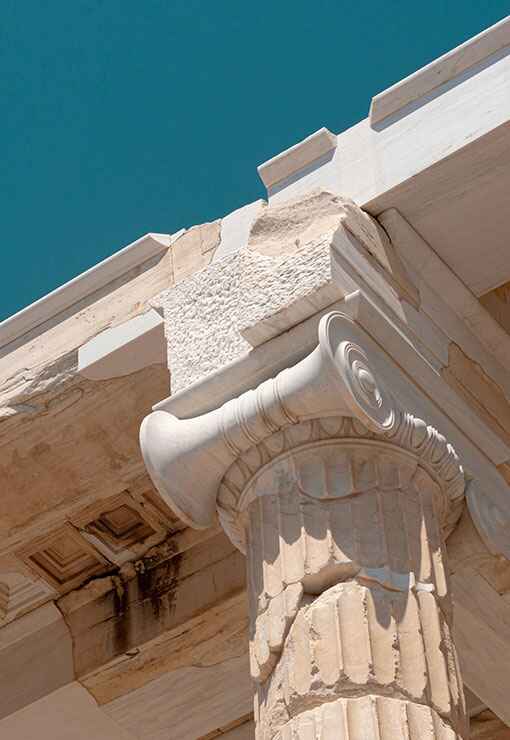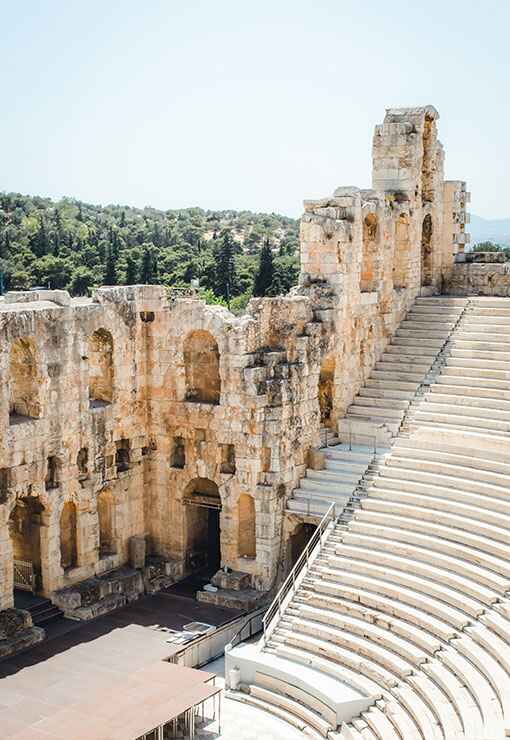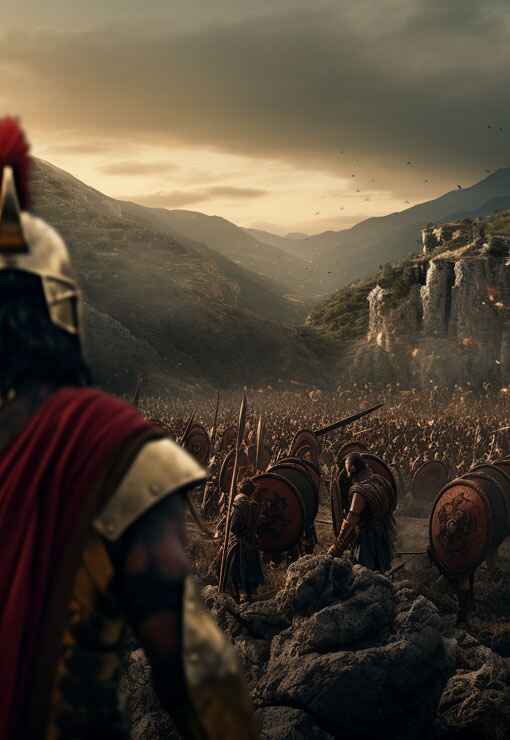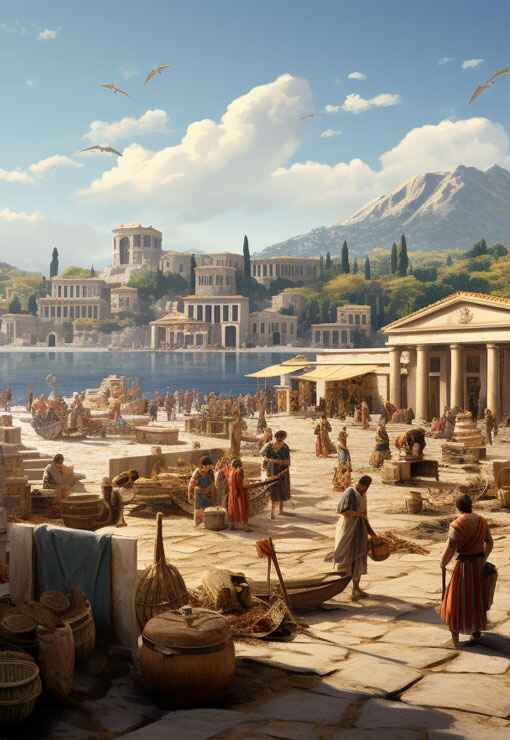

The Cult of Asclepius was one of the most prominent and influential healing cults in ancient Greece, centered around the worship of Asclepius, the god of medicine and healing. Temples dedicated to Asclepius, known as Asclepieia, served as healing sanctuaries where the sick would seek cures through a combination of religious rituals and early medical practices. The most famous of these healing centers was located in Epidaurus.
Origins and Significance: The cult of Asclepius emerged in the 5th century BCE, and Asclepius was believed to be the son of Apollo and the mortal woman Coronis. Asclepius was renowned for his healing abilities, and his sanctuaries became major centers for medical treatment and religious devotion. The cult combined elements of traditional religious worship with practical approaches to health and healing, making it a unique aspect of Greek religion and medicine.
Healing Sanctuaries (Asclepieia): Asclepieia were established in various locations across Greece, with the most notable being in Epidaurus, Kos, and Pergamon. These sanctuaries served as both temples and early hospitals, where patients would undergo rituals and receive treatments. The process of healing often began with a ritual purification, followed by offerings and prayers to Asclepius. Patients would then spend the night in the abaton, a sacred dormitory, where they hoped to receive divine guidance through dreams.
Rituals and Treatments: The healing practices at Asclepieia were a blend of religious rituals and early medical procedures. Incubation, or dream therapy, was a central practice where patients slept in the abaton to receive healing visions from Asclepius. These dreams were interpreted by priests, who prescribed treatments based on the divine messages. Treatments could include dietary recommendations, exercise, herbal remedies, and minor surgical procedures. The holistic approach to healing at Asclepieia reflected the integration of body, mind, and spirit in Greek medicine.
Role of Priests and Physicians: The priests of Asclepius, known as Asclepiadae, played a crucial role in the healing process. They were responsible for conducting rituals, interpreting dreams, and administering treatments. In addition to the religious aspects, these priests often had medical knowledge and were skilled in various therapeutic techniques. The dual role of priest and physician underscored the close connection between religion and medicine in the cult of Asclepius.
Notable Healing Centers: The Asclepieion at Epidaurus was the most famous and revered healing sanctuary, attracting visitors from all over the Greek world. It featured impressive architecture, including a large temple, a theater, and various buildings dedicated to medical treatment. Other significant centers included the Asclepieion on the island of Kos, associated with the physician Hippocrates, and the Asclepieion at Pergamon, known for its advanced medical facilities and innovative treatments.
Impact and Legacy: The cult of Asclepius had a profound impact on the development of medicine in ancient Greece. It promoted the idea that health and healing were sacred pursuits, and it laid the groundwork for the later advancements in medical science. The integration of religious and medical practices influenced the holistic approach to health that characterized Greek and, subsequently, Roman medicine. The symbol of Asclepius, a staff with a serpent entwined around it, remains a widely recognized emblem of medicine to this day.
Worship and Art: Worship of Asclepius included the dedication of votive offerings, such as small sculptures representing healed body parts, as thanks for successful treatments. Artistic depictions of Asclepius often showed him holding his serpent-entwined staff, symbolizing rejuvenation and healing. These offerings and artworks reflect the deep gratitude and reverence that worshippers felt towards the god of healing.

The Asclepieion at Epidaurus was renowned not only for its healing practices but also for its impressive theater, which could seat up to 14,000 spectators. The theater, known for its exceptional acoustics, was used for both entertainment and therapeutic purposes, reflecting the holistic approach to healing that characterized the cult of Asclepius.
Ancient Greek art and architecture, with its harmonious proportions and timeless elegance, continue to inspire awe and admiration millennia later.
Discover
Greek mythology, a rich tapestry of gods, heroes, and mythical creatures, captivates the imagination with its tales of love, betrayal, and epic adventures that delve into the depths of the human psyche.
Discover
Ancient Greek history, marked by remarkable achievements in democracy, philosophy, and warfare, shaped the foundation of Western civilization, leaving an indelible legacy of innovation and cultural influence that continues to resonate to this day.
Discover
The ancient Greek Olympics, held in Olympia every four years, celebrated athleticism, unity, and cultural pride, serving as a testament to the enduring spirit of competition and excellence that transcends time and borders.
Discover
Ancient Greek wars, such as the Persian Wars and the Peloponnesian War, were pivotal conflicts that shaped the course of history, highlighting the struggle for power, independence, and the clash of civilizations in the ancient Mediterranean world.
Discover
Ancient Greek culture and society, characterized by its emphasis on art, philosophy, and civic engagement, fostered a vibrant intellectual and social landscape where innovation flourished, democracy thrived, and the pursuit of knowledge and excellence was celebrated as fundamental values of civilized life.
Discover
Find out more about ancientgreece.com